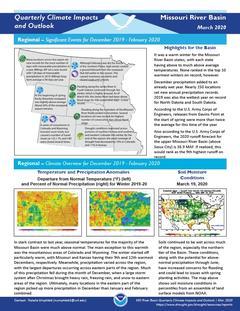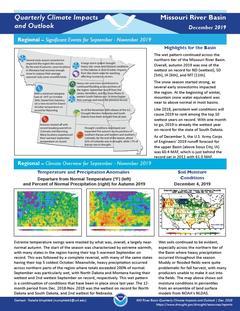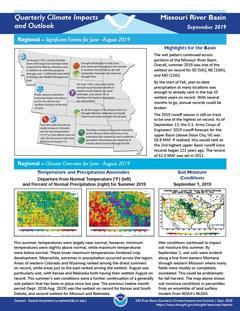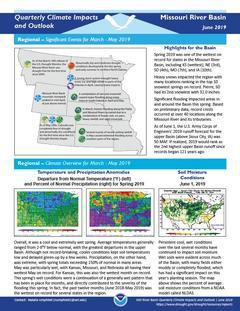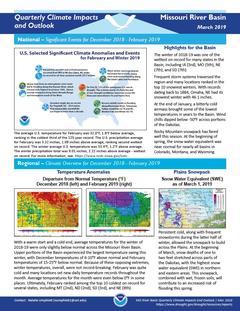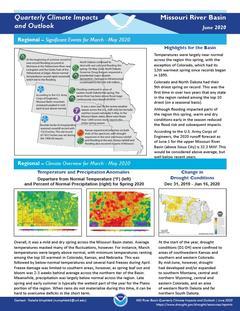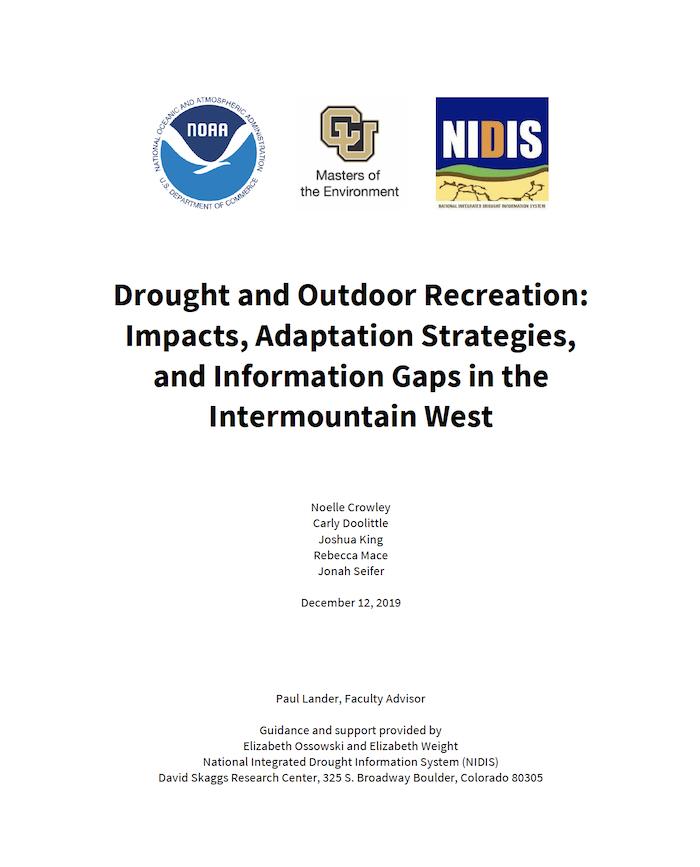Quarterly Climate Impacts and Outlook for the Missouri River Basin June – August 2020. Dated September 2020.
Summer 2020 was one of the warmest on record for many states in the region, including CO (3rd), NE (9th), ND (10th), SD (11th), and WY (11th). It was also one of the driest summers for CO (7th), IA (14th), NE (16th), and WY (16th).
Quarterly Climate Impacts and Outlook for the Missouri River Basin December 2019 – February 2020. Dated March 2020.
Seasonal temperatures for the majority of the Missouri Basin were much above normal. The main exception to this warmth was the mountainous areas of Colorado and Wyoming. Meanwhile, precipitation varied across the region, with the largest departures occurring across eastern parts of the region.
Quarterly Climate Impacts and Outlook for the Missouri River Basin September – November 2019. Dated December 2019.
Extreme temperature swings were masked by what was, overall, a largely near-normal autumn.The wet pattern continued across the northern tier of the Missouri River Basin. Overall, autumn 2019 was one of the wettest on record for North Dakota (wettest), South Dakota (5th), Iowa (6th), and Montana (11th).
Quarterly Climate Impacts and Outlook for the Missouri River Basin June – August 2019. Dated September 2019.
This summer, temperatures were largely near normal; however, minimum temperatures were slightly above normal, while maximum temperatures were below normal. Meanwhile, extremes in precipitation occurred across the region. This summer's wet conditions were a further continuation of a generally wet pattern that has been in place since last year.
Quarterly Climate Impacts and Outlook for the Missouri River Basin March – May 2019. Dated June 2019.
Average temperatures generally ranged from 2-8°F below normal, with the greatest departures in the upper Basin. Precipitation, on the other hand, was extreme, with spring totals exceeding 150% of normal in many areas.
Quarterly Climate Impacts and Outlook for the Missouri River Basin December 2018 – February 2019. Dated March 2019.
With a warm start and a cold end, average temperatures for the winter were only slightly below normal across the Missouri River Basin. Persistent cold, along with frequent snowstorms during the latter half of winter, allowed the snowpack to build across the Plains.
Quarterly Climate Impacts and Outlook for the Missouri River Basin March – May 2020. Dated June 2020.
Temperatures were largely near normal across the region this spring, with the exception of Colorado, which had its 12th warmest spring since records began in 1895. Although flooding impacted parts of the region this spring, warm and dry conditions early in the season reduced the flood risk and subsequent impacts.
Outdoor recreation is a major contributor to the Intermountain West’s economy, but the future viability of many businesses—particularly small businesses—in the industry is threatened by their drought vulnerabilities and the region’s projected increases in drought severity and frequency.



